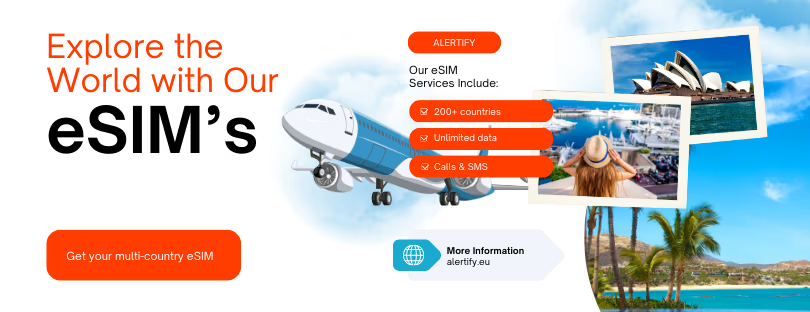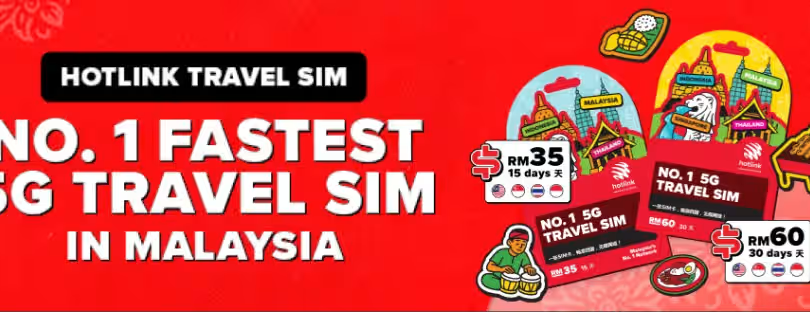
eSIM for Multi-Country Trips: One Card to Rule Them All
Traveling internationally can be one of the most exhilarating experiences—new cultures, stunning landscapes, and unforgettable adventures. But there’s one part of the journey that almost everyone dreads: staying connected. Whether it’s juggling SIM cards, battling unexpected roaming charges, or hunting for reliable Wi-Fi, staying online while traveling across multiple countries has always been a logistical headache. Enter the eSIM—a game-changer for globetrotters. If you’re someone who loves convenience and hates swapping SIM cards mid-trip, you’re about to fall in love with this tiny piece of technology.
Let’s dive into why eSIMs are a must-have for multi-country trips and why they might just be the one card to rule them all. eSIM for Multi-Country Trips
What is an eSIM? (And Why Should You Care?)
First things first: What exactly is an eSIM? The “e” stands for embedded, meaning this SIM is built directly into your device. Unlike the traditional SIM card you need to physically insert into your phone, an eSIM is software-based. It’s programmable, meaning you can switch carriers, purchase data plans, and even manage multiple numbers—all without fiddling with a tiny plastic card.
For travelers, the appeal is obvious. Imagine landing in a new country, scanning a QR code, and instantly activating a local data plan. No more queuing at airport kiosks, no more carrying around a bag of tiny SIM cards, and no more fumbling with SIM card ejector tools (or using a paperclip because you forgot one).
Why Traditional SIMs Don’t Cut It for Multi-Country Trips
When hopping between countries, traditional SIMs can quickly become a hassle. Here’s why:
- Frequent Swapping: If you’re visiting several countries in one trip, you might need to buy a new SIM card for each one. This means multiple purchases, registrations, and—let’s be honest—lots of confusion.
- Roaming Costs: While some traditional SIMs allow international roaming, the costs can add up fast, especially if you’re streaming, navigating maps, or video-calling home.
- Compatibility Issues: Not all SIM cards work in every country, and some regions have different cellular standards, meaning your SIM might not even connect.
- Lost Cards: Those tiny pieces of plastic are way too easy to misplace, especially when you’re juggling passports, boarding passes, and travel itineraries.
How eSIMs Solve the Multi-Country Travel Puzzle
So, what makes eSIMs such a travel hero? Let’s break it down:
1. Seamless Connectivity Across Borders
With eSIMs, you can switch between networks and plans without physically changing anything. Many eSIM providers offer regional or global plans, meaning you can stay connected as you move from one country to another without interruption. It’s like having a virtual SIM that “travels” with you.
Imagine this: You’re on a Eurotrip, starting in France, then heading to Italy, Spain, and Germany. Instead of buying four different SIM cards, you activate one eSIM plan that covers all these countries. Easy, right?
2. Cost-Effective Options
One of the biggest draws of eSIMs is the competitive pricing. Providers often have affordable regional or multi-country plans that let you avoid expensive roaming fees. Plus, you can compare plans from various providers and choose the one that best suits your needs—all from the comfort of your phone.
3. No More Hunting for SIM Cards
Landing in a new country and needing to find a local SIM card can be stressful, especially if you don’t speak the language or arrive at odd hours. With an eSIM, you can purchase and activate a plan before you even leave home or while in transit.
4. Eco-Friendly and Convenient
Since eSIMs are software-based, there’s no physical waste. No plastic SIM cards, no packaging, and no clutter in your wallet. It’s a small but meaningful step toward more sustainable travel.
Real-Life Scenarios: How eSIMs Shine
Still on the fence? Here are some scenarios where eSIMs prove their worth:
The Spontaneous Explorer
You’re on a month-long trip across Southeast Asia. After a week in Thailand, you decide to take an impromptu detour to Vietnam. With a traditional SIM, you’d need to buy a new card. With an eSIM, you simply open the app, purchase a Vietnam data plan, and you’re good to go—no interruptions to your Instagram uploads or Google Maps navigation.
The Business Traveler
You’re attending conferences in London, Dubai, and Singapore—all in one trip. Instead of juggling multiple SIMs or worrying about outrageous roaming charges, you activate an eSIM plan that works across all three regions. Your phone number stays the same, your email works seamlessly, and you’re always reachable.
The Digital Nomad
As someone who works remotely, reliable internet is non-negotiable. With eSIM, you can switch to the strongest local network wherever you are, ensuring uninterrupted Zoom calls and smooth workflows.
- AIRALO
-
eSIM for
Europe
39 countries
-
1 GB – 7 days – €4.27
3 GB – 30 days – €11.09
10 GB – 30 days – €31.57
- AIRHUB
-
eSIM for
Europe
34 countries
-
1 GB – 7 days – €2.99
3 GB – 30 days – €5.12
10 GB – 30 days – €11-09
- aloSIM
-
eSIM for
Europe
32 countries
-
1 GB – 7 days – €5.00
3 GB – 30 days – €13.00
10 GB – 30 days- €36.00
- GigSky
-
eSIM for
Europe
36 countries
-
1 GB – 7 days – €6.99
3 GB – 15 days – €11.19
10 GB – 30 days – €27.99
- iRoamly
-
eSIM for
Europe
39 countries
-
1 GB – 7 day – €6.83
3 GB – 15 days – €10.24
10 GB – 30 days – €18.77
- Maya Mobile
-
eSIM for
Europe
34 countries
-
1 GB – 7 days – –
5 GB – 15 days – €5.99
10 GB – 30 days- €13.99
- NOMAD
-
eSIM for
Europe
36 countries
-
1 GB – 7 days – €4.71
3 GB – 15 days – €10.27
10 GB – 30 days – €15.41
- UBIGI
-
eSIM for
Europe
29 countries
-
500 MB – 1 day – €2.00
3 GB – 30 days – €8.00
10 GB – 30 days – €19.00
- VOIA
-
eSIM for
Europe
34 countries
-
1 GB – 7 days – €2.69
3 GB – 15 days – €5.05
10 GB – 30 days- €11.70
How to Get Started with eSIMs
Ready to embrace the eSIM life? Here’s how to get started:
1. Check Device Compatibility
Most modern smartphones—like the iPhone XR and newer, Google Pixel models, and many Samsung Galaxy devices—support eSIMs. A quick search for your phone’s specs will confirm if it’s compatible.
2. Choose an eSIM Provider
There are plenty of eSIM providers to choose from, including
- BNESIM: Plans with no expiration, great prices
- Airhub: Wide variety of plans with affordable prices
- Airalo: Offers regional and global data plans, perfect for travelers.
- Nomad: Known for affordable and flexible options.
- Ubigi: Great for high-speed connectivity and broad coverage.
3. Purchase and Activate
Once you’ve chosen a provider, purchase a plan through their app or website. You’ll usually receive a QR code to scan, which automatically activates your eSIM. It’s that simple.
4. Set It Up
On your phone, go to settings, select “Add Cellular Plan,” and follow the prompts. Most devices let you name your eSIM plans, making it easy to switch between them if needed.
Tips for Using eSIMs While Traveling
- Download Plans Beforehand: If possible, download and activate your eSIM plan before you leave home to avoid any connectivity hiccups upon arrival.
- Keep Your Physical SIM as Backup: If your phone has a dual SIM setup, keep your regular SIM active for calls and texts while using your eSIM for data.
- Monitor Data Usage: Use your phone’s settings or the provider’s app to keep an eye on your data usage and avoid overage fees.
- Research Local Networks: Some eSIM providers let you choose between multiple local carriers, so pick the one with the best coverage in your area.
The Future of Travel Connectivity
eSIM technology is still evolving, but it’s already revolutionizing how we stay connected on the go. As more providers and devices adopt eSIM capabilities, we’re inching closer to a world where physical SIM cards might become obsolete. For frequent travelers, this shift couldn’t come soon enough.
Final Thoughts about eSIM for Multi-Country Trips
Traveling should be about the experience—not about stressing over SIM cards or racking up ridiculous roaming fees. With an eSIM, you have the freedom to focus on what really matters: exploring new places, connecting with people, and making memories. It’s convenient, cost-effective, and, frankly, a no-brainer for multi-country trips.
So, the next time you pack your bags, leave the SIM card shuffle behind. With one card to rule them all, the world is truly at your fingertips. Safe travels!



















